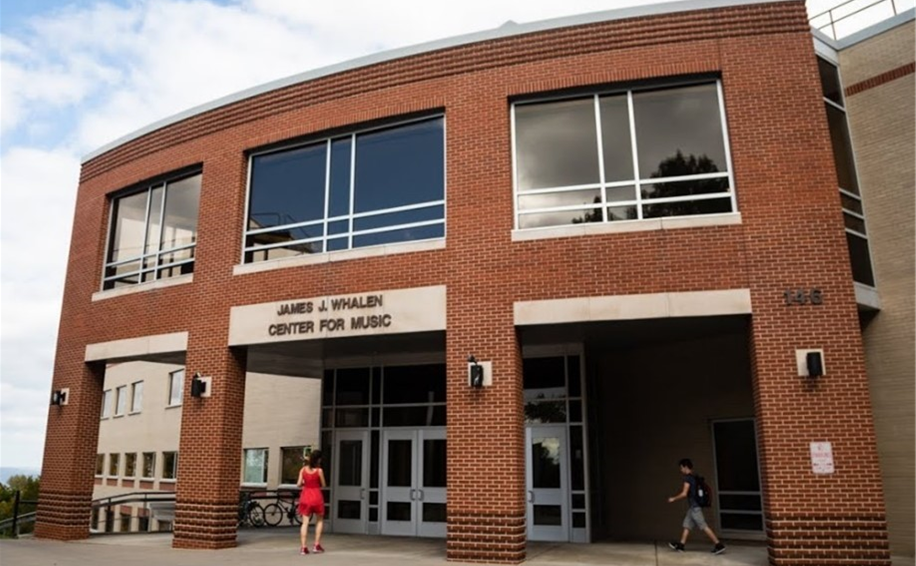Dedicated to David Turkon (1953-2022)
A colleague floated a wager.
Who can spot the most faculty in a day?
Someone reported eight sightings in our three-story campus building. They won.
Another colleague texts pictures each week of the empty parking lots on campus. Three years ago, many of us scrambled to get there by 7:30 a.m. to secure a spot. Now you can park close any time.
So, where are the professors?
The Campus Without Faculty
In the otherworldly landscape of the pandemic campus, faculty, students, and administrators seek a collective purpose. Where is discussion and debate? Where is our community?
We are faculty in the arts. One of us is an opera singer, the other a media historian and theorist. For many years, we have worked together to mount concerts for the Finger Lakes Environmental Film Festival on the Ithaca College campus.
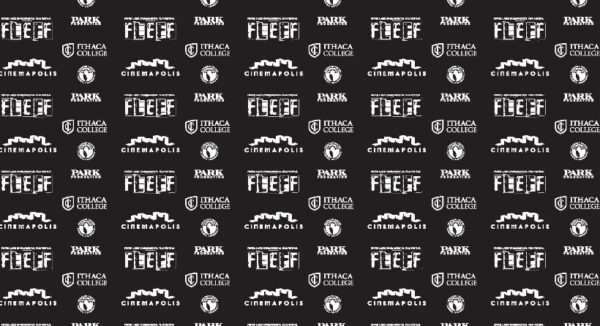
Like musicians in an orchestra, faculty must collaborate — on projects, classes, new curricula, committees, and more. We invest in the shared governance of our institutions, which has become increasingly precarious.
We devote many hours beyond teaching because we care deeply about our research, our classes, our concerts; we care about opening students to new ideas.
As faculty in the arts, we need the public spaces where camaraderie, shared experiences, and collective goals help us push students from their comfort zones into worlds beyond their preconceptions.
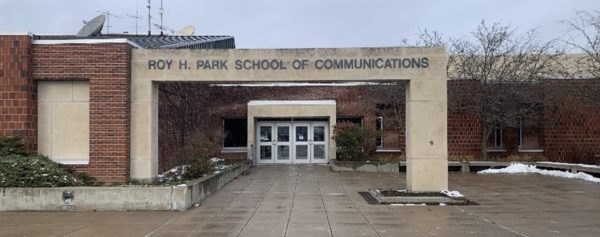
But in the pandemic, students’ comfort zones have vanished, so they find solace and connection in the familiar.
It is far easier to surrender to computer-generated dance music at 120 beats per second that comfort, motivate, or energize than it is to deeply analyze the gender and racial significance of Beyoncé’s new album “Renaissance” (2022), or deconstruct the militaristic conservative politics of “Top Gun: Maverick” (2022). These tasks are more challenging.
Quiet Hangs in the Empty Halls
Our academic buildings have become simulations: of libraries, of movie theaters, of concert halls.
It’s as though some elaborate special effects in a film erased all the human characters, leaving only the building with arrows of daylight shooting through its skylights.
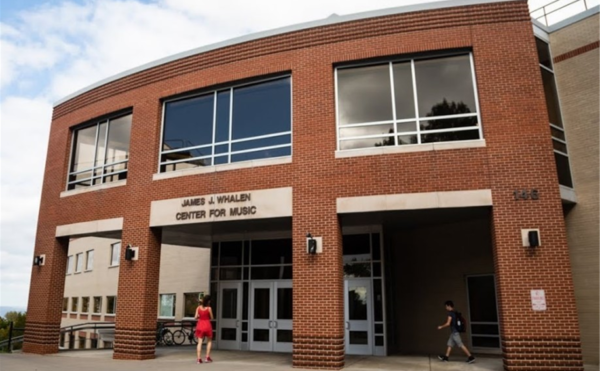
The pre-pandemic schedule of activity in the music building at Ithaca College would begin with the arrival of the dean and faculty between 7 and 8 a.m., joined by students at 8 when classes and lessons started. At 6 pm, most classes ended, making way for evening rehearsals or performance, and many students remained even later, inspired by the evening’s events, working in the basement practice rooms until 1:30 a.m., when campus security kicked them out.
Now, a stillness has taken over campus.
Signs on faculty doors announce that all office hours are on Zoom. Now that in-person classes have resumed, many faculty do a “dump and run” — teach and leave immediately to avoid contracting COVID variants. Even on Zoom, meetings and colloquia are sparsely attended.

The trouble is — music does not exist without community.
It requires composers, performers, and patrons to listen, interpret, contextualize, discuss, and study. Sharing and feedback undergird this process.
Students practicing in the basement of the music building at Ithaca College must put in time alone to develop their technique, musical skill, and a distinctive aesthetic. However, the need to come together to share the fruits of solitary work is critical to the development not only of music, but of all academic disciplines.
With work speed-ups, faculty burnout, endless student expectations for flexible deadlines and resubmissions, and the continuing assaults on everyone’s mental equilibrium, it is easy to understand the empty halls and offices on campuses as the art of self-care in times of pandemic, downsizing, and austerity.
The Stillness Unnerves and Disturbs
This pervasive cloud of quiet signals a troubling retreat from academia as a collective of intellectual and artistic ideas.
A shared space for the debates that flow through research, art, and instruction is disappearing.
Academia has been emptied, gutted, dried out, evacuated. It is a barren landscape, like a snow-covered field on a grey day in upstate New York.
One student observed that the buildings at Ithaca College felt like mortuaries.
Passing the Baton
Erik Barnouw, a foundational figure in mass communications and documentary studies whose books defined our discipline, saw teaching as much more than student-centered.

He argued that teaching entailed “passing the baton” of a field to students, so that they could become part of it — and go on to disturb and expand it. Ideas and debates beyond the self were central to this process.
Teaching, then, is never about the teacher but about encouraging students to push the boundaries of their fields. When they can share what they have learned and discovered with the next generation, faculty thrive. It is difficult to quantify success in this regard because the effect might be immediate, appearing in student evaluations, or it might show up in students’ work at the time or a decade later. Still, while it does not lend itself to precise assessment, passing the baton is the best thing we do.
However, the baton seems to have slipped out of our hands. Faculty, now employees under a student-as-consumer model, are experiencing a malaise. Our responsibilities are always expanding: restructuring teaching for the pandemic, immersion in the technological innovations required, added non-teaching responsibilities, and continuous dedication to one-on-one student coaching. Requirements are many — thanks are few.
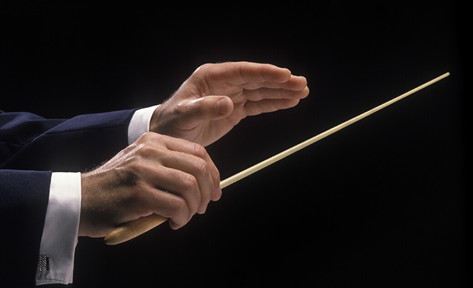
Institutions are starting to recognize pandemic-induced student trauma, but faculty traumas are repressed, displaced to providing care for students. If students don’t attend class or meet academic expectations, individual faculty are held responsible, with larger structural, political, and institutional analyses ignored.
Pandemic Surges
The pandemic has surged through professordom in ways not fully recognized. We experience the deaths of elderly parents and our own health concerns. We must continue to work despite the loss of childcare, despite supply chain shortages, despite work speed-ups, despite caregiving at home and in the classroom, despite disengaged students in Zoom classes, despite students still dropping out of our classes and out of college.
As many analysts have noted, the pandemic hit certain industries such as the performing arts — including cinema, sports, music, theaters — and higher education with earthquake force, destroying the workplaces of people sharing physical and intellectual space.
These fields depend on shared experience, which normally means at least some collective space. Disciplines as disparate as vocal training for opera or critical analysis for screen studies need to engage with theories, histories, and practices across nations and identities. Could good work be done within pandemic limitations?
It could and it was: Tech innovations exploded with livestreaming solo recitals, Zoom-square choirs, transnational cello concerts, iPhone lockdown cinematic diaries, asynchronous screenings, and online film festivals that increased accessibility.
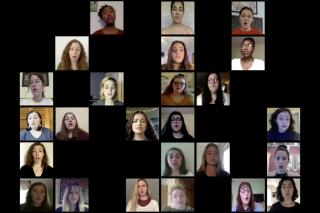
Ithaca College Zoom Choir of “Amazing Grace”
But the celebration of online creativity ignores the circumstances of workers. Tenured members of the Metropolitan Opera orchestra and chorus went on unemployment during the pandemic shutdown. Once prized for their incredible skill, artistry, and experience, these musicians suddenly lost value in society, and while the rest of us watched our favorite shows on media streaming platforms, “gig” artists went hungry.
These consumption patterns engendered further isolation while allowing certain sectors of the arts to thrive. For example, we could continue to watch shows like RuPaul, meticulously produced throughout the pandemic by relying on expensive testing and isolation protocols which are unavailable to classical musicians, independent filmmakers, or most institutions of higher education.

While commercial media could transcend pandemic limitations, those restraints ushered in some of the most unsettling challenges to higher education in decades: precipitous drops in student enrollment and retention, intensifying academic remediation issues, institutional financial woes, and some of the most troubling student disengagement in years.
The Missing Students and the Lonely Self
Jonathan Malesic, in his New York Times op-ed of May 13, “My College Students Are Not Okay,” says that many faculty teaching now report some of the worst student performance in decades.
In the current moment of all-hands-on-deck top-down positivity campaigns on many campuses, faculty can only discuss this issue in underground settings.
Defending their poor attendance record, one sophomore said that the liberal arts course he was enrolled in was not a top priority because it wouldn’t help him get a job. The student pulled out his mobile phone to prove that nowhere on the college website does it state that students are required to attend classes.
The ongoing pandemic has intensified existing campus trends toward transactional attitudes and consumerist practices as the isolation of lockdown and quarantine simultaneously stopped the spread of COVID and ramped up self-centered individualism.
The individual took priority over the collective and the collaborative.
Privileged members of our society could stream movies on a whim, order Za’atar spice blends from Amazon, listen to Philip Glass or Rhiannon Giddens on ear pods, and take long walks in nature to recover a pre-pandemic sublime amidst a mounting global environmental and public health catastrophe, while others couldn’t rely on their internet service to be able to participate in their remote teaching and learning.
The Conversion Campaign
A corollary to the increasing emphasis on the individual student has been a troubling campaign across almost all sectors of academia to convert professors into silenced, frightened employees pledging allegiance to their own institutions under threat of having their non-tenured or even tenured positions eliminated.
This process signals a disturbing shift toward the inward and the institutional, forcing faculty to prioritize enrollment and retention over everything else, and creates a subtle but persistent pressure to point fingers at other members of our own community rather than to collectively focus on overcoming the challenges that all of higher education is facing today.
Stripping away research and creative work — those outward-facing passions which define college faculty — leaves the service of undergraduates as the institution’s only priority and intensifies the student/consumer trend of pre-pandemic higher ed which has unfurled incrementally, with austerity paramount. Research grants are cut and travel funds zeroed out in favor of teaching workshops and sessions on new instructional technologies. And of course, faculty salaries are frozen, even though more money “can be found” for top floor administrators.
Colleges and universities must function as protected public spheres unfettered by market pressures, where new ideas, practices, art, philosophies, protests, and debates can germinate and then travel out into the world.
Experiments by visionary teachers like Milton Babbit and Roger Sessions paved the way for the contributions of artists like Stephen Sondheim and Tobias Picker.
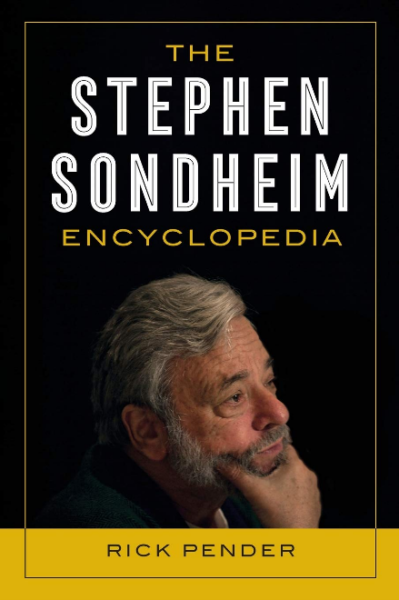
Without fertile relationships within the academy, these musical groundbreakers could never have found traction for their electronically and mathematically inflected ideas that advanced music and impacted the artistry of generations of composers and performers.
Academic disciplines are never done. They are always in flux. Therefore, the responsibility of the academy and its administrators is simple: support their faculty to push parameters, so that students can learn to do the same.
Now, sadly, they are doing just the opposite.
The neoliberal turn in academia has threatened faculty for decades as institutions looked to downsize and pander to students, especially in private, tuition-driven institutions. Increasingly, academia evaluates faculty on affect rather than artistic or intellectual accomplishment, taking its cues from student fantasies on the one hand and corporate-speak and middle-brow culture on the other.
The conversion of professors into employees without intellectual authority is a process that reduces opportunities for real student development and robs society of the artists and thinkers they might have become.
Malaise
The abandonment of academic ideas is not confined to one particular institution.
It exemplifies the system-wide crisis of higher education as an industry in decline that has bowed to conservative politicians, becoming more aligned with producing products (degrees and jobs) than offering processes (expanding awareness and opening possibilities). Academia has changed course from transformation to transaction.
Higher education must have at its core the transformation of students, faculty, disciplines, and the world through discussion, community, and debate. In its decline, it is now about transactions. Education once focused on infinitely expanding possibilities of use value; now it enacts exchange relations.
Institutions under fire see the complexity of intellectual and creative work as a threat. As a result, many of them, especially four-year undergraduate institutions, marginalize, demonize, and trivialize research and creative work as a not-to-be-discussed hobby or a second secret job rather than the lifeblood of academia.
In this environment of collapse and trauma, compounded by the pandemic, it is no surprise that a treacherous and debilitating malaise engulfs faculty. Their low morale is palpable.
Who can blame them for skipping meetings, opting for office hours on Zoom, declining to march at graduation, and eliminating collegiality from their lives in the face of the two tidal waves of neoliberal ideology and institutional denial of what they do and who they are?
Open the Doors
Higher education has answered demands for austerity with an attack on faculty.
This began with the institution of a rallying cry: “we must be student-centered,” they say, giving rise to the popularized mantra “students are our why.”
In this scenario, professors are selfless attendants with no identities apart from teacher. Student-centered faculty must fully commit to making their courses easily accessible, deploying as many new technologies as possible, and engaging in constant one-on-one personal outreach to struggling, absent, disengaged students. Here, individual student needs are paramount, but communities formed around ideas, research, disciplines, or art are largely absent, as is students’ intellectual development.

Thomas Bohn, the retired Dean of the Roy H. Park School of Communications at Ithaca College who still teaches as an adjunct and is a mentor to both of us, has coached many faculty during his 50 years in the academy.
He maintains that “the primary task of the professor is to open the door to a discipline and invite students in. The primary task of the student is to cross that threshold and actively engage the discipline.”
This represents a different strategy than “students are our why.” Rather than centering students, it centers ideas. Rather than focusing on the individual, it offers a community.

Even as young musicians strive for individual perfection, they work with faculty addressing problems and then demonstrate their progress as part of their musical community.
Whatever the discipline, students must be participants rather than spectators in their own learning.
In a society where industry offers more tangible rewards, what else would keep faculty in the academy other than an environment that celebrates out-of-the-box thinking shared with students?
But “students are our why” ultimately undermines our purpose, contributing to the cacophony of higher education in crisis.
At first, it served as a healthy reminder that professors needed to engage students with our relationships to knowledge. Now at many institutions what began as support and encouragement has been derailed and weaponized against faculty as an anti-intellectual war cry, eroding morale and productivity.
The Urgency of Why and How
The phrase “students are our why” percolates through the popular discourse about education and as an inspirational meme appearing on t-shirts and coffee cups.
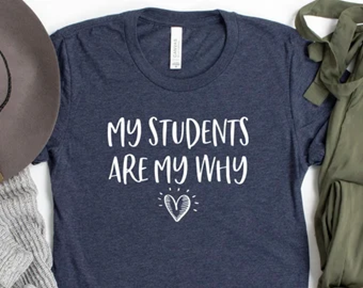
Etsy, the online retailer for crafters and small businesses, offers pages and pages of t-shirts, mugs, stickers, and other tchotchkes sporting the current rallying cry of education from elementary school through college: “my students are my why.”
On one rainy afternoon in the empty parking lot adjacent to the Roy H. Park School of Communications, a colleague asked: is there a professor anywhere who is not dedicated to their students?
At best, “students are our why” is redundant.
At its worst, this phrase redefines faculty labor away from their disciplines to become producers of affect, nurturers in loco parentis with individual students rather than their guide into particular communities of thought and practice.
A Corrective and a Copyedit
A phrase that circulated in the 1990s among academic administrators at comprehensive colleges was a more astute remix of “students are our why.” This adjustment recognizes faculty as participants in their fields and gives students agency and responsibility.
It is: “discipline-centered faculty, learning-centered students.”
This slogan from 25 years ago brings an urgently needed corrective to “students are our why” that restores the larger world of ideas and art to higher education. Without a disciplinary context that grounds our courses, we risk focusing on instructor affect to the extent that teaching becomes a cult of personality and students are shortchanged. Like the transferrable skills so prized by employers, students need transferrable knowledge that means something outside a particular classroom.
Ithaca College adopted “Theory, Practice, and Performance” as a tenet of its 2019 strategic plan. These three words are essential because they illustrate the inward and outward movement of the academic process.
A musician learns theory developed over centuries, the product of ideas which pushed boundaries. The musician practices and develops their own aesthetics and artistic interpretation. Finally, they share the results of this inward-facing labor outward to the world.
Every academic discipline requires its own version of “Theory, Practice, and Performance.” It is not unique to music or to Ithaca College’s strategic plan. As professors, we must actualize the “theory” of these strategic plans, which requires thinking beyond the “why” in the phrase “students are our why.”
Critical analysis and creative endeavor, whatever the discipline, require more than why.
They also require how.
How suggests a way forward, methods, strategies, calculations, tactics, maps, adjustments, analysis.
These two words, why and how, form the combustion engine of pedagogy, performance, research, and writing. They undergird the strategies for everything from a critical analysis of a piece of environmental new media art to training a young soprano to sing the Queen of the Night’s aria in Mozart’s “The Magic Flute” (1791) to learning to hear the polyphonic structure in West African drumming.
Not just why, but how.
Perhaps we need to be generous about the slogan “students are our why.” In the losses of pandemic, austerity, and downsizing, something clear and simple can reassure, a placeholder until new ideas spring forth.
However, it seems clear that the second part of this phrase might have been accidentally deleted and needs to be reinserted: Professors Are the How.
David Turkon was an esteemed faculty member and inspirational pedagogue and scholar in the Department of Anthropology at Ithaca College with a research specialization in African Studies. Since 1987, he made many trips to Lesotho where he sustained strong friendships, studying the effects of the escalating AIDS-related deaths on the local social and power structure. He fought tirelessly and joyously for ideas, collectivity, students, and faculty.
We thank Ari Kissiloff, Assistant Professor of Strategic Communication in the Roy H. Park School of Communications at Ithaca College, for inventing the phrase “professors are the how” and granting us permission to use it in this piece.
Brad Hougham is Professor of Music Performance at Ithaca College. He is a sought-after clinician and pedagogue and has taught extensively and sung in solo and choral settings in the United States, Europe, Asia, and Canada.
Patricia R. Zimmermann is the Charles A. Dana Professor of Screen Studies and Director of the Finger Lakes Environmental Film Festival at Ithaca College in Ithaca New York. The author or editor of ten books, her most recent are “Documentary Across Platforms: Reverse Engineering Media, Place, and Politics” (Indiana 2019) and “Flash Flaherty: Tales from a Film Seminar” (Indiana, 2021). Deepest thanks to Jane Banks.

